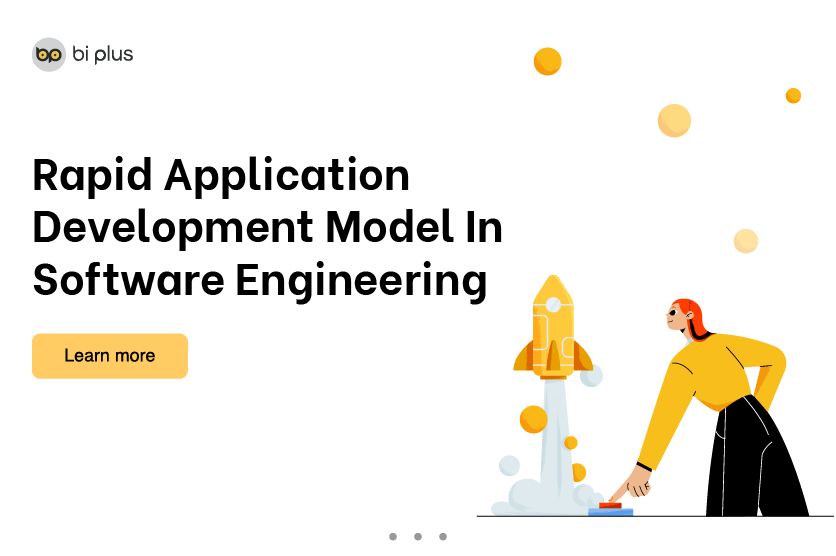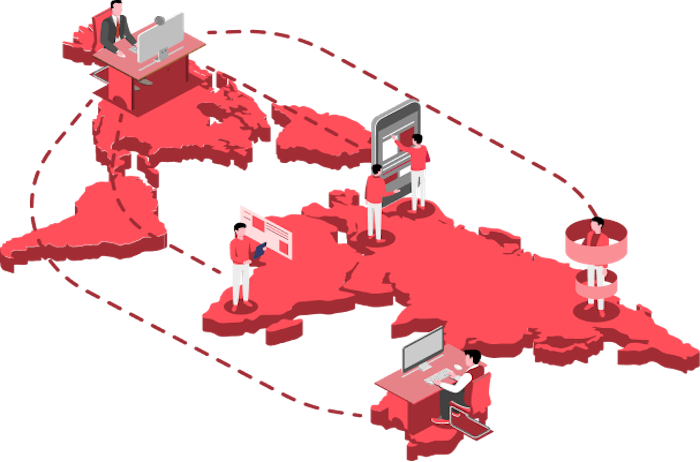The requirement for speed and effectiveness in software development cycles has never been greater as organizations of all types confront raised expectations in terms of application quality and delivery dates. However, producing efficient software rapidly is frequently insufficient. Additionally, development teams need the ability to change course when necessary—which can happen mid-project. Rapid application development model in software engineering (RAD) might hold the key.
Table of Contents
What is a rapid application development model in software engineering?
What is a rapid application development? Rapid Application Development (RAD) refers to an adaptive software development model centered on prototyping and rapid feedback, with less emphasis on particular planning. In general, the RAD approach promotes development and the creation of a prototype over planning. Rapid application development model in software engineering allows developers to make several iterations and modifications to software without starting from scratch. This helps ensure that the final product is more quality-focused and meets the needs of the end consumers.
5 phases of rapid application development methodology
The five phases of rapid application development are business modeling, data modeling, process modeling, application production, and testing and turnover. These steps can be separated to make them more clear and achievable. The following procedure is featured in all RAD models:
Stage 1: Business Modeling
The RAD model’s business modeling step uses company data acquired from a variety of business-related sources. This information is then brought together to create a helpful explanation of how the data may be used after processing and what makes this particular information successful for the sector.
Stage 2: Data Modeling
The information obtained during the Business Modeling step is all examined during the Data Modeling stage. The analysis divides the data into various categories that the business may find valuable. Each data group’s level of quality is carefully analyzed and accurately described. In this stage of the process, a connection between these groups and their usefulness as described in the business modeling step is also built.
Stage 3: Process Modeling
All of the information groups obtained during the Data Modeling phase of the RAD model process are transformed into the necessary usable information during the Process Modeling phase. Changes and improvements can be made, and the data sets can be described further, at the Process Modeling stage. During this stage, any descriptions for introducing, eliminating, or altering the data objects are also created.
Stage 4: Application Generation
The information gathered is coded in the Application Generation process, and the system that will be utilized to build the prototype is constructed. The developed data models are transformed into real prototypes that may be tested in the following stage.
Stage 5: Testing and Turnover
The Testing and Turnover stage provides for more efficient testing of the prototypes developed. Each model is evaluated separately in order to quickly identify and change the components in order to develop the most effective product. Because the majority of the pieces have already been evaluated, your prototype should be free of severe flaws.
Basic knowledge of Spiral Model In Software Engineering
Rapid application development model process
Step 1: Identify the Requirements
Rapid application development model in software engineering distinguishes itself from typical software development techniques from the start. It does not necessitate meeting with end customers to obtain a precise list of specifications; instead, it requests a general demand. Because the needs are wide, you can take the time to separate specific requirements at various stages of the development cycle.
Step 2: Create a prototype
This is where the actual development takes place. Instead of adhering to a rigorous set of requirements, developers produce prototypes with various features and services as quickly as possible. These prototypes are then displayed to clients, who decide what they like and don’t like.
Most of the time, these prototypes are quickly put to work in order to highlight only the most important characteristics. This is typical, and the final product is only developed during the finalization stage, when the client and developer agree on the final product.
Step 3: Construction
The construction stage is an important step of development. To construct a functioning system from a workable model, engineers and developers put in countless hours of work. At this point, reviews and feedback are essential, and the majority of bugs, problems, and changes are dealt with. This phase can be extremely drawn out, especially when clients change their minds or the feedback is extensive.
Step 4: Deployment
The produced system must be installed in a real-time production environment as part of the RAD process. Technical documentation, issue tracking, extensive scale testing, last-minute changes, and system simulation are all part of the deployment phase. Prior to launch, teams also devote effort to debugging the app and doing last-minute updates and maintenance.
V model in software engineering
Rapid application development: Advantages and Disadvantages
Advantages of RAD Model |
Disadvantages of RAD Model |
| ✅ Flexible and responsive to change | ⭕ Require strong team collaboration |
| ✅ Promote customer’s feedback | ⭕ Require highly skilled developers and designers |
| ✅ Quick and constant user’s feedback | ⭕ Only used for modularized systems |
| ✅ Reduced development time | ⭕ Potential reduced scalability |
| ✅ More productivity with fewer people | ⭕ Requires a high level of commitment from all stakeholders. |
| ✅ Integration is not a problem due to early system integration | ⭕ Only suitable for projects with short development time |
When should we use the rapid application development model in software engineering?
1. When Your Prototypes’ Testing is reliable
Rapid application development model in software engineering is a wonderful technique to pursue if you have a pool of users that can provide consistent and reliable feedback on the prototypes you create. Prototypes created using the rapid application development methodology rely on feedback from earlier iterations, therefore solid feedback from reliable sources can be extremely beneficial.
2. When you have a big-budget
Rapid application development is typically inexpensive when compared to other development models, although there are some situations where the developments can be expensive because of RAD characteristics. If you hire talented employees, you must pay them a fair wage. The upside is that, if you have the employees, you can complete the idea much more quickly than with alternative models.
3. When your project needs to be done quickly
Rapid application development is your greatest option if you’re on a strict timeline. Choosing a RAD platform may be the best option if you are under pressure to provide something that works. Rapid application development software is your best option if you don’t have the time to go through a protracted requirement planning and design phase. In order to develop quickly and alter course quickly, rapid application development model in software engineering adopts an on-the-fly methodology.
As such, there is no doubt that the rapid application development model in software engineering can advance project competencies, yield results on schedule, and increase client satisfaction by a factor of ten with the right team and committed stakeholders. Whether you’ve just joined the bandwagon or are trying to make that first move, there is no doubt that this is true.
Related articles:









